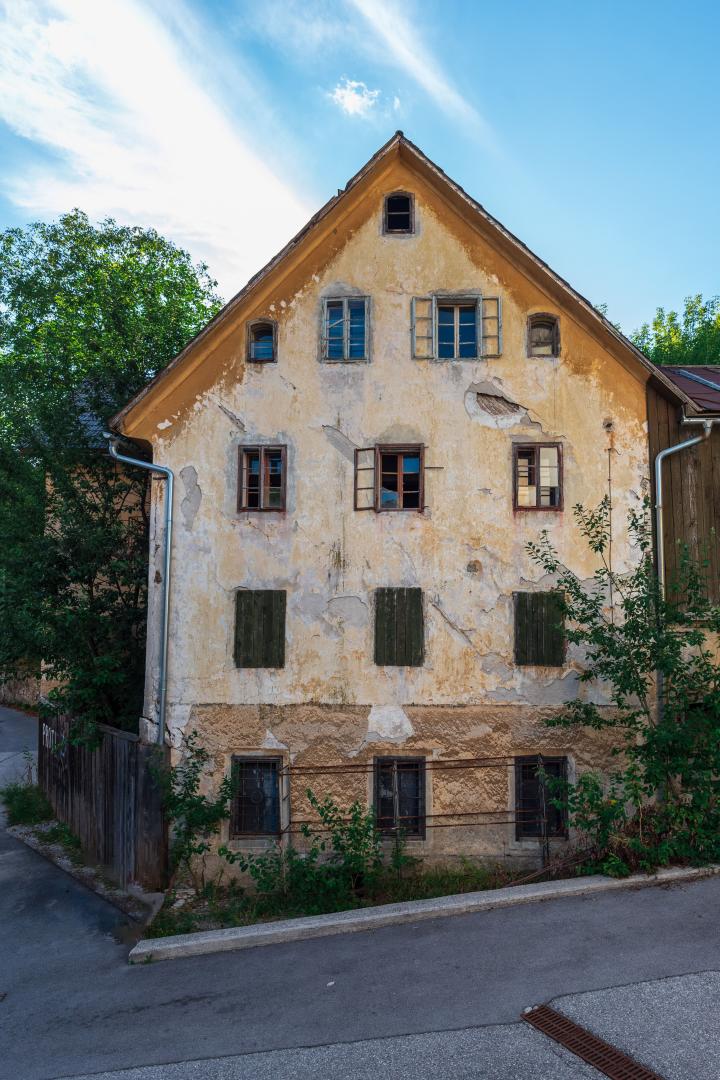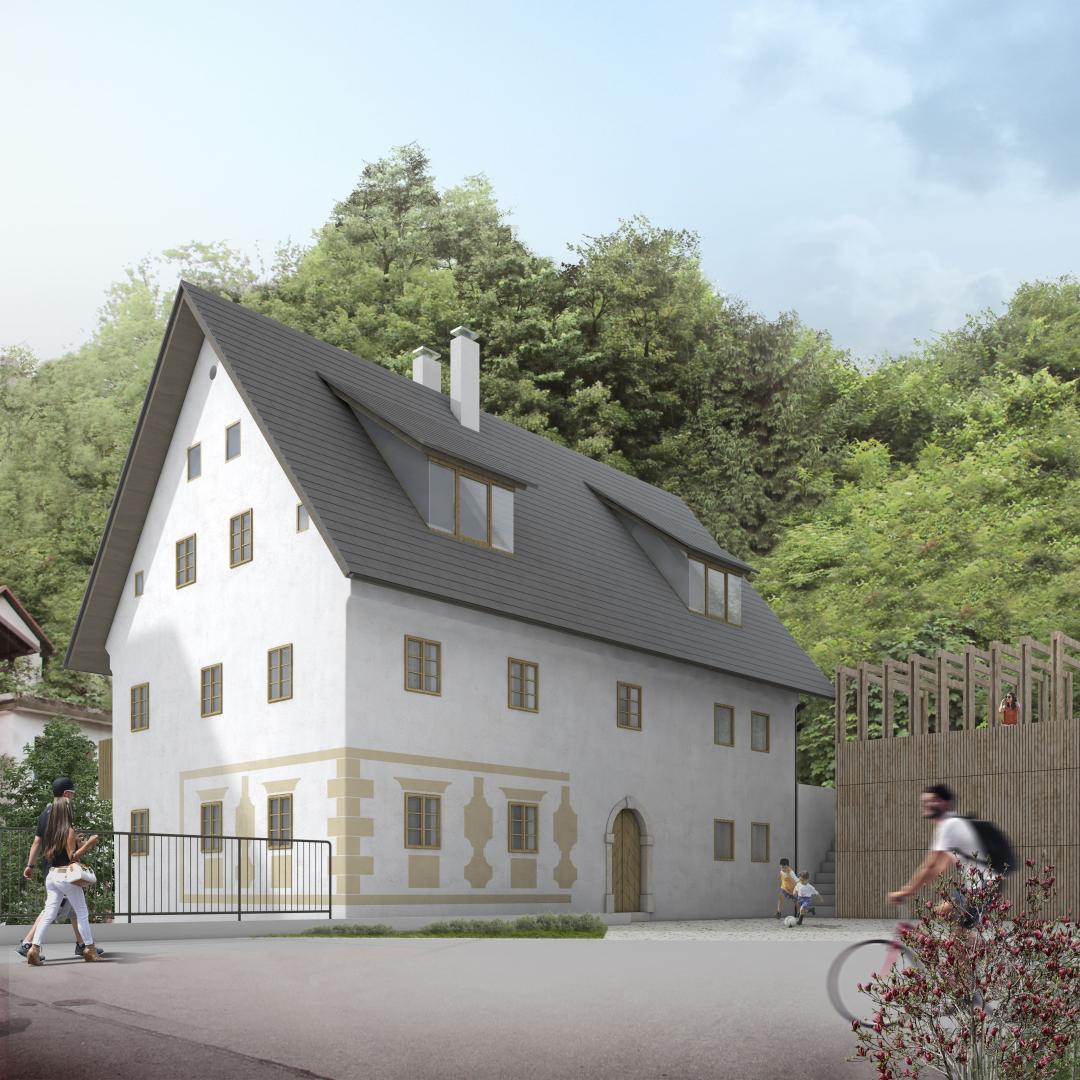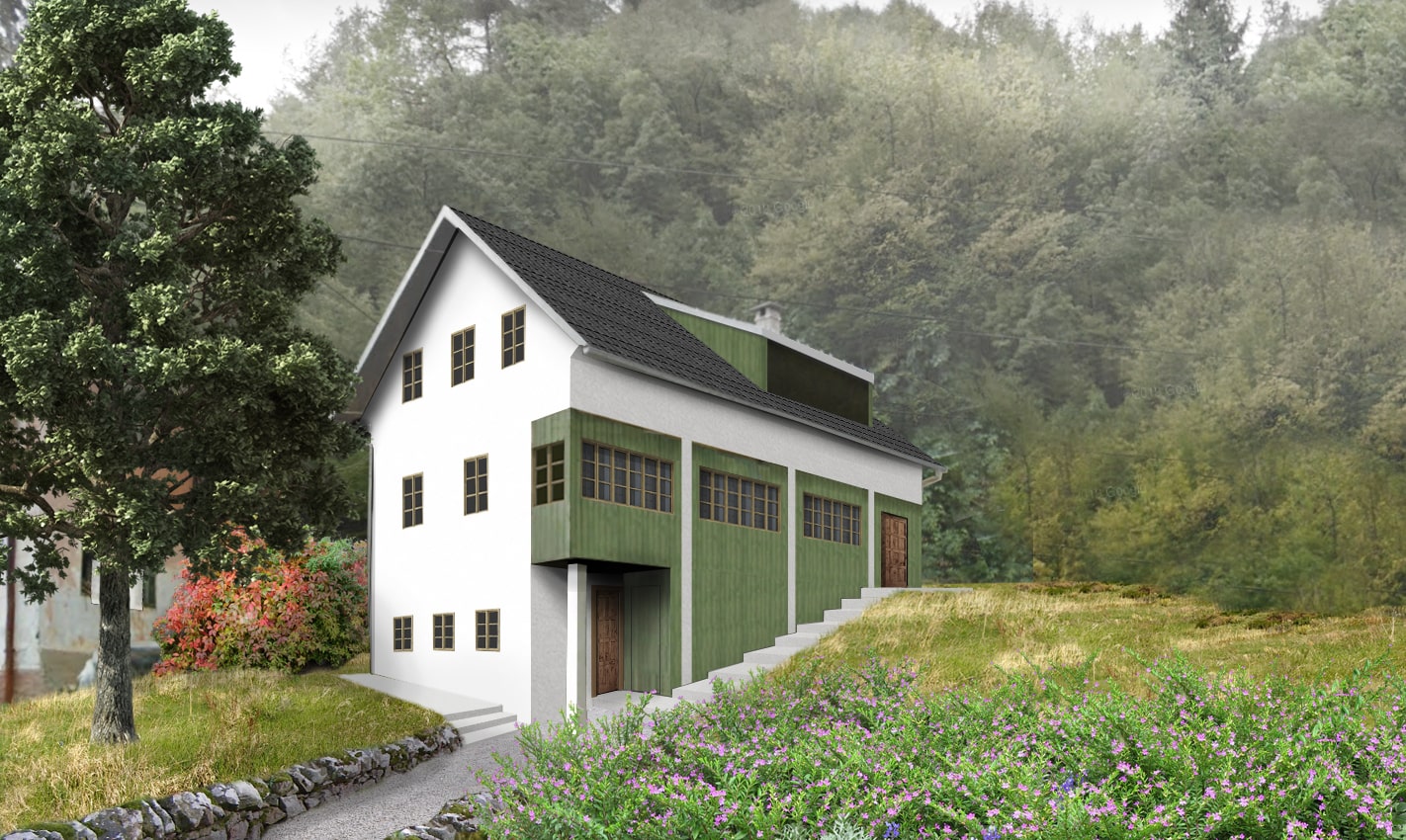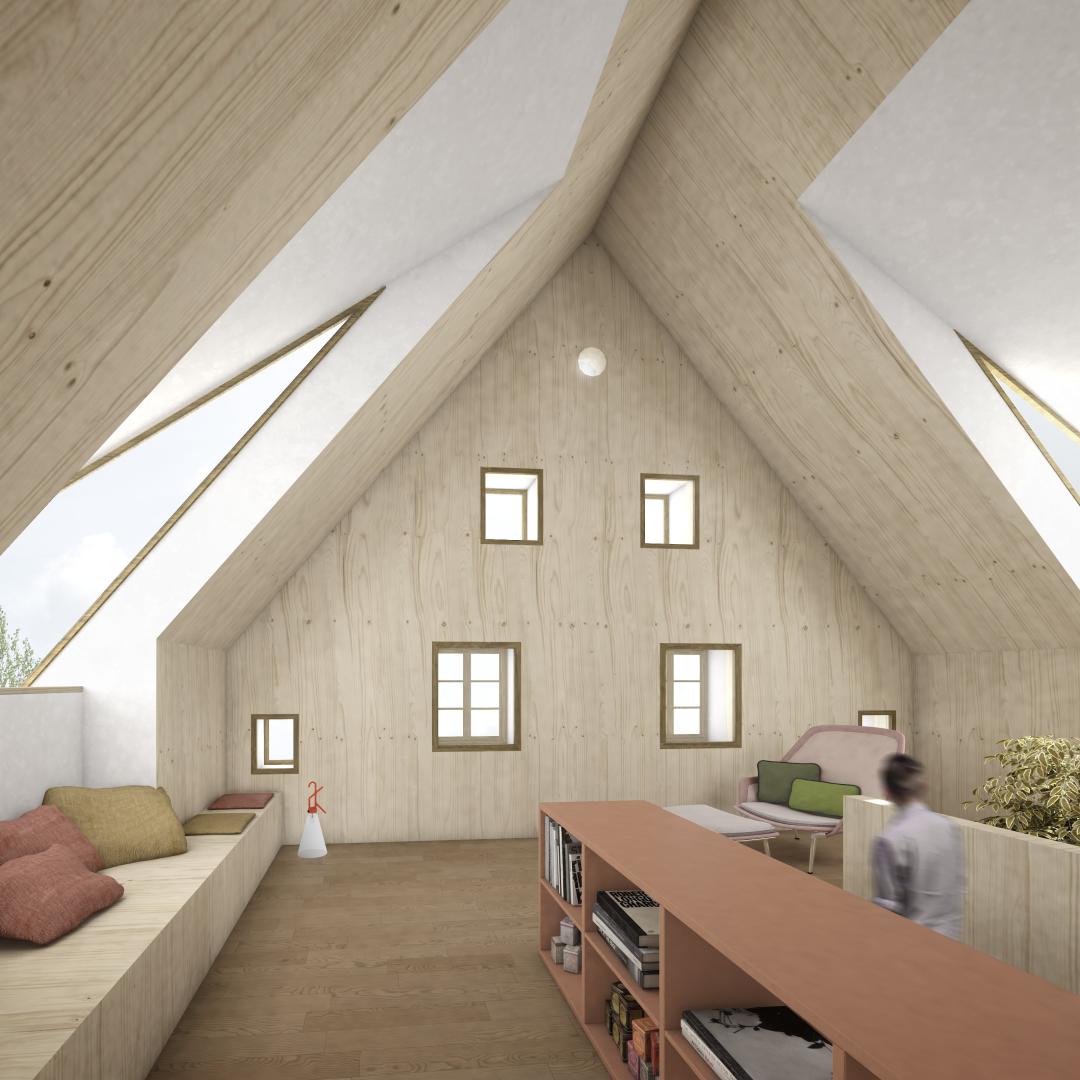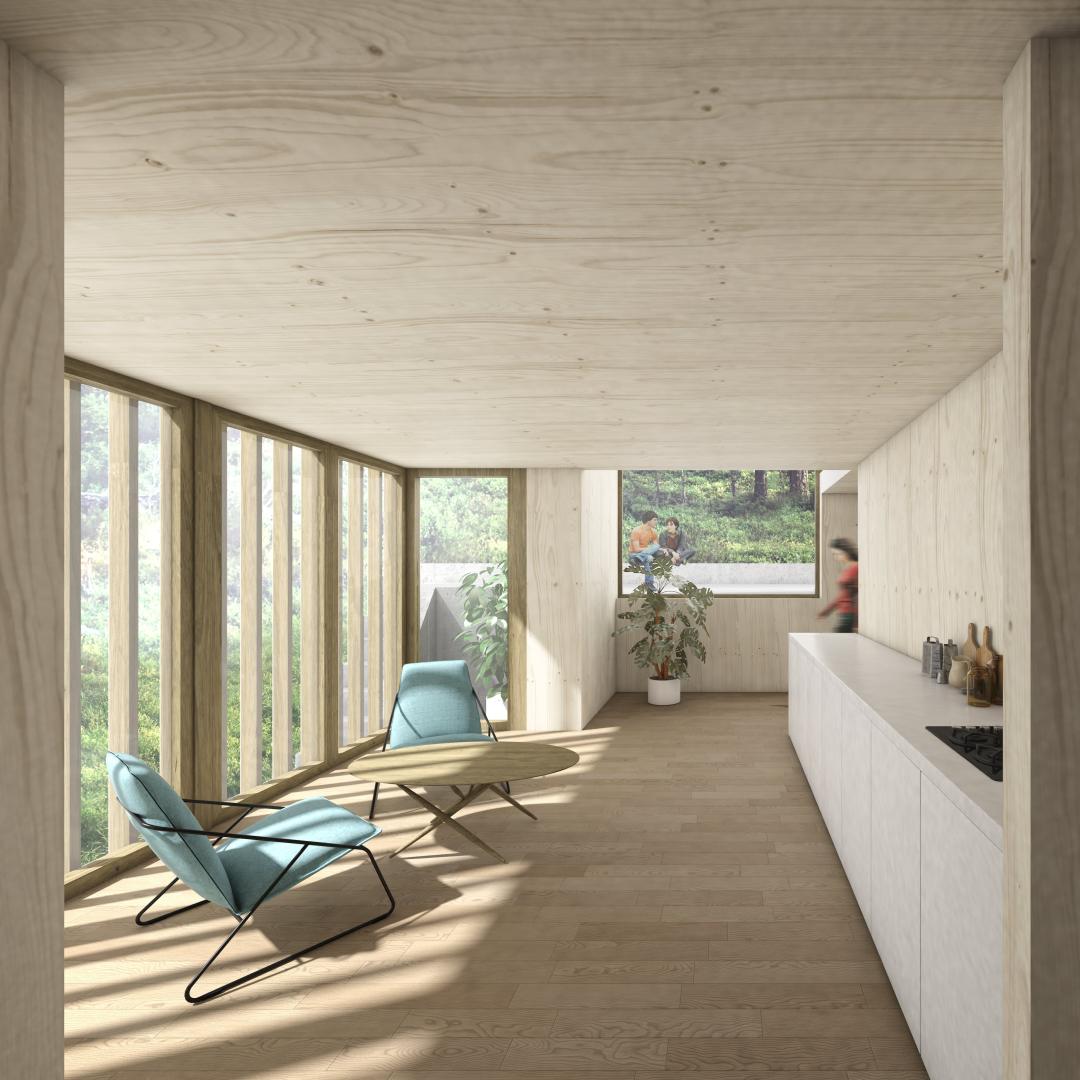102 Initiative
Basic information
Project Title
Full project title
Category
Project Description
102 Initiative proposes a decisive youth-led action toward cultural heritage-inspired, no-steel-no-concrete revitalisation of traditional Idrija Miners’ Houses in UNESCO World Heritage site in Idrija (Slovenia).
The initiative envisions prepare and design up to 20 renovation projects and to various degrees renovate, finance, maintain and operate traditional houses through public-private-people partnership in a sustainable and socially-just manner.
Project Region
EU Programme or fund
Description of the project
Summary
Typical for the former mercury mining and semi-peripheral town of Idrija in Slovenia, the Idrija Miners’ House is a unique housing architecture of the late 18th and 19th Century, characterised by multi-storey wooden structure, steep roofs, and symmetrically organised small windows. Today, 102 of such houses still stand, half are empty. As they have been heavily modified, only 18 have retained more than five traditional characteristics.
In a time when Idrija, Slovenia and Europe in general are facing a dire lack of affordable and quality housing, and when the space for construction should be allocated with care, 102 old, partially abandoned and forgotten houses is not just a public image challenge, but an immense opportunity – an opportunity for a novel approach that bridges cultural heritage preservation, sustainable and affordable housing, re-newed construction skills of the past, and a strengthened identity of this UNESCO World Heritage site.
The proposed “102 Initiative”, developed by an interdisciplinary team of ID20 Institute (urban studies & architecture, cultural heritage, social innovation, entrepreneurship), envisions a comprehensive green revitalisation of traditional Idrija Miners’ Houses through a public-private-people partnership(s). The initiative answers to the market demand, cultural heritage conservation aims, municipal strategic development plan, and public participation in all aspects of the project planning, implementation and use (more at www.rudarske-hise.si/102-initiative).
Contrary to conventional revitalisation projects, the initiative plans to:
- Revitalise before renovation (through non-profit programme of ID20 Institute);
- Renovate through a combination of workshops, construction traineeships, guest traditional builders and contracted construction works;
- Develop a diverse range of business proposals, from “Design – Build – Finance – Maintain – Operate (DBMFO)” models to fully private investments and crowdfunding and sourcing.
Key objectives for sustainability
Our key principles on sustainability:
- Long forgotten materials and techniques
Idrija Miners’ Houses were built predominantly between 1776 and 1876 by Idrija Mercury Mine miners themselves and thusly using locally-sourced and renewable materials: lime stone for foundations and cellar walls, wooden beams for walls, wooden shingles for roofing, wood for window casings and doors, slaked lime and reed mats for plastered facades …
In renovation, we will be prioritising traditional materials (wood, slaked lime) and traditional construction techniques (lime plaster, clay plaster, wood joinery, masonry, structural timber, reclaimed wood and clay plaster). Moreover, through workshops, traineeships and hosting of guest traditional builder, we aim to re-introduce, popularise and share the traditional building materials and techniques.
- NSNC – No Steel, No Concrete
We are dedicated to minimise the use of steel and concrete in renovation and construction works and incorporate renewable construction materials (structural timber, reclaimed wood, eco-friendly bonding agents ...)
- Area neutrality
For centuries, Idrija’s growth was limited by the geography and thusly newer exceeded 6000 people. The initiative aims at achieving area neutrality which is – in a narrow basin such as Idrija – both an environmentally-friendly solution, urbanistic smart choice and a strategic necessity. Urban densification will also considerably contribute to strengthened spatial identity and cultural landscape of Idrija basin.
- Adaptive reuse
Although constructed as multi-family housing units, Idrija Miners’ Houses nowadays are not all appropriate to be renovated for housing purposes. As part of Business Proposal preparation, our proposal will explore the opportunities for each building individually and opt for programmes that best suit the location, existing building condition, market demands and contribute the most to the quality of the neighbourhood.
Key objectives for aesthetics and quality
Our key principles on experience:
- Rethinking “miners’ Biedermaier”
Although poor and with no formal education, miners and their wives developed a unique aesthetics. Miners used utilitarian pieces of furniture and combined them with a workers’ take on Vienna-influenced Biedermaier style. They have copied and even simplified already clean lines and utilitarian postures and used locally available materials (oak, beech, ash …). 102 Initiative wishes to re-think the modest version of Biedermaier style that has defined the culture of Central Europe and propose a contemporary blend into 21st Century technology.
- Architecture without architects
Clean lines, utilitarian postures, symmetric façade, two-colour palette, lime plaster-covered wooden structure, monumental outlook, hidden extensions, and green setting of Idrija Miners’ Houses demonstrate how architecture without architects can be both timeless, artistic and aesthetically appealing. We wish to learn from the non-pedigreed builders to build for the 21st Century.
- Spatial and historical identity
Placemaking is in the heart of our proposal. Contrary to the trends of building generic “rootless” buildings and with that neglecting the original spatial identity, we propose to reverse that trend. Emphasising what is already there, we aim to preserve the spatial character and feel, while making the traditional Idrija Miners’ House a key of this identity.
Key objectives for inclusion
Our key principles on inclusion:
- Youth-led development
The initiative is developed within Idrija 2020 Association (association for youth development) and ID20 Institute (NGO subsidiary of Idrija 2020) that unite young (25 – 35 y.o.) professionals from Idrija and have implemented several award-winning projects for youngsters and young people on the topic of cultural heritage (e.g. business incubator HeritageLab (winner of European Social Innovation Competition 2018 by European Commission), hackathon HeritageHack (awarded European Heritage Days Stories 2019 by the Council of Europe and European Commission)).
We envision to involve up to 100 young people in the initiative – through on-site workshops, trainings and lectures on traditional construction, sustainable architecture and design, social innovation and cultural heritage development.
- Tausendkünstler (taužtnkunslerji)
Our initiative seeks inspiration and relies its implementation on inclusion and close collaboration with “Tausendkünstler-s”. The german word Tausendkünstler (in dialect adapted to “taunžtkunstler”) can be translated as the “artist with thousand skills” – local older inhabitants that have (through their broad range of jobs and self-initiative) come to master a diverse range of skills, from traditional construction to wood working, engineering and craft.
We envision to involve (and fairly pay) 10 Tausendkünsler-s that will teach-through-practice their skills and approaches to younger generations of renovators. In this two-way process, Tausendkünstlers (often retired, poor or unemployed and facing loneliness and social exclusion) will be recognised for their abilities as practitioners and life experiences – in a setting, where their socioeconomic status and unforgiving life will be put aside.
Innovative character
Main (socially) innovative aspect of our initiative:
- (Social) business sound
The team behind the initiative has been working at the crossroad of cultural heritage, entrepreneurship, youth policies and social innovation for several years. Thusly, the team has put all the best ideas and proven approaches into 102 Initiative to develop a sound proposal – both business-wise and social-wise.
- Citizen science
102 Initiative is not solely a brick-and-mortar renovation project – it is a community project that started with broad action research of housing heritage. Through field research, interviews with owners, public meetings and discussions, 102 Initiative encourages inhabitants to contribute and participate in the understanding the current status and potential ways forward. The initiative involves a diverse range of stakeholders, young people and Tausendkünstlers that are all engaged not as “consumers/users”, but active collaborators.
- STEAM approach
ID20 has been adopting STEAM (science-technology-engineering-art-mathematics) approach to education and organising photography, engineering, chemistry and physics, as well as art workshops at annual “culture day” at Idrija Grammar School (15 – 19 y.o.). Within 102 Initiative, the classes will be moved on-site – to the building site.

